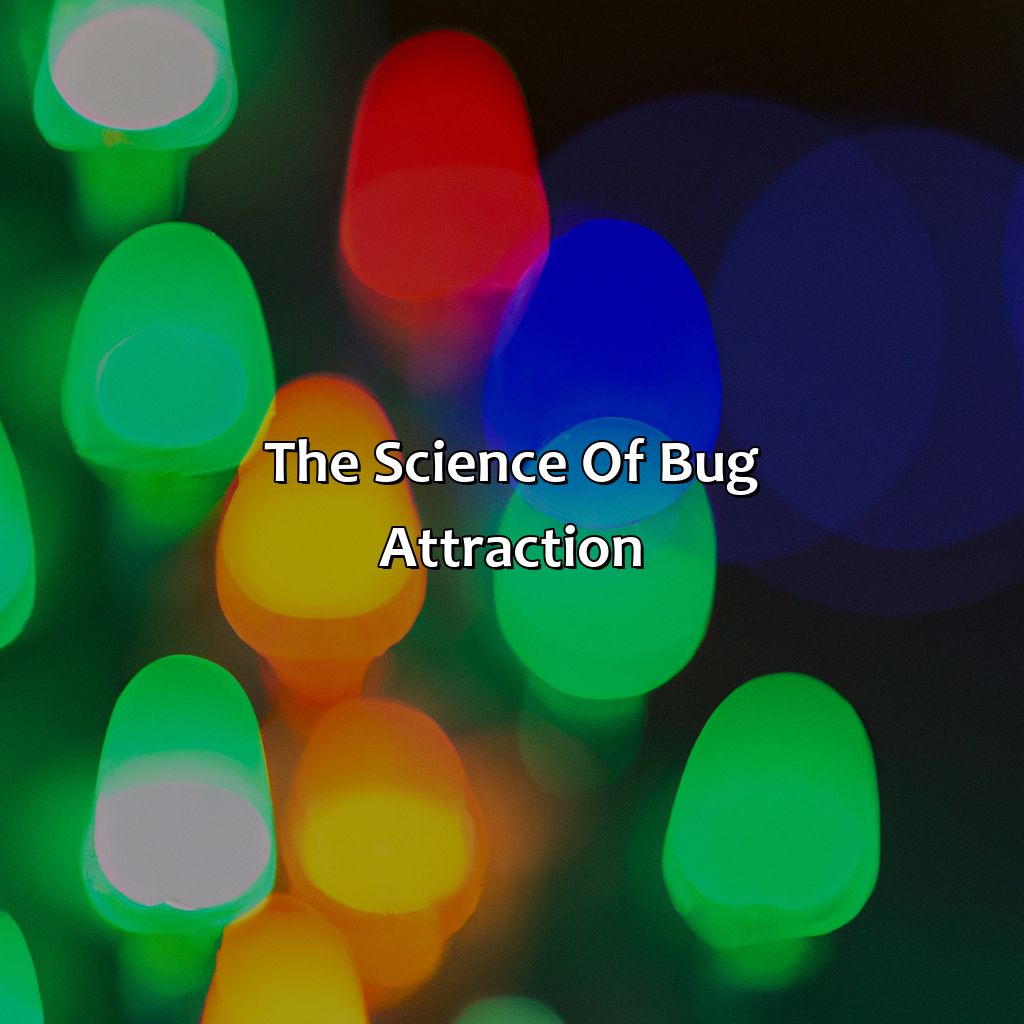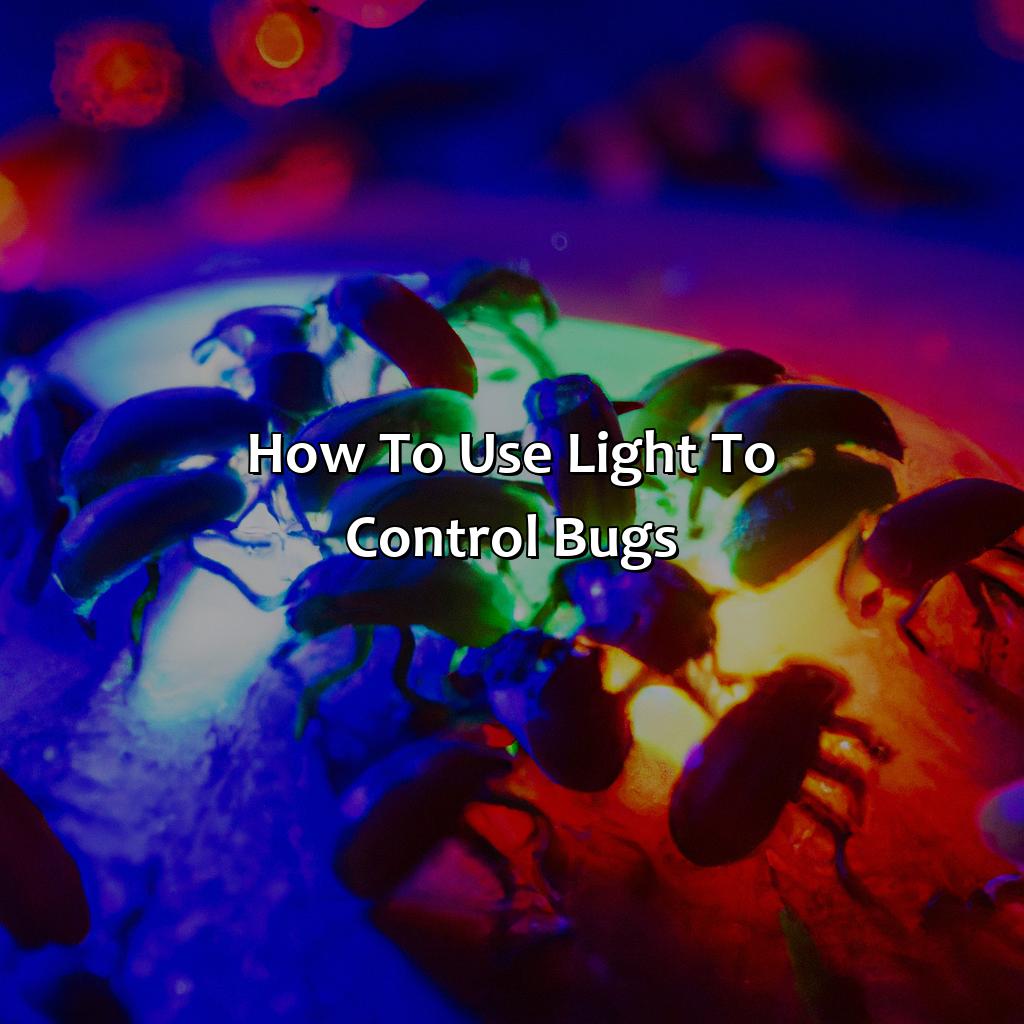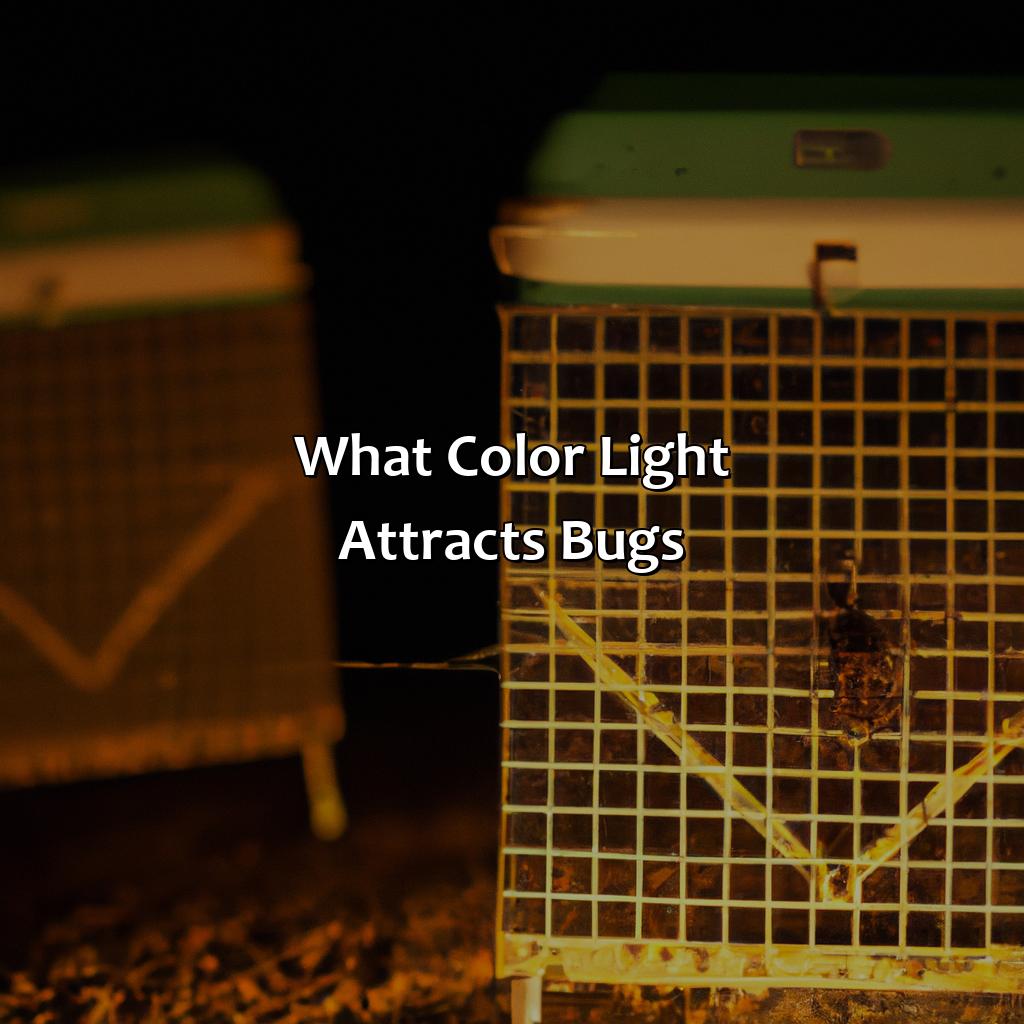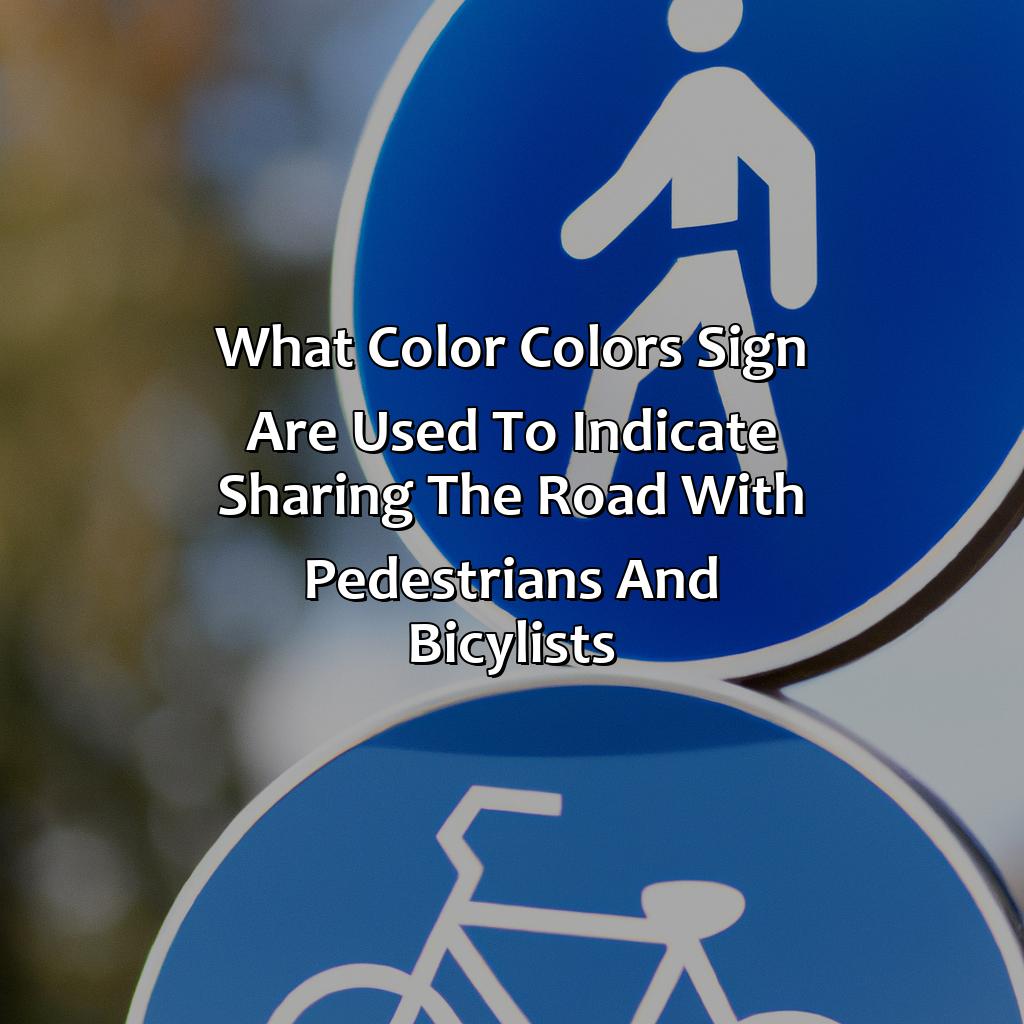Key Takeaway:
- Light plays a major role in bug attraction: Bugs are attracted to light because they use it for navigation and to locate their prey. Understanding how light affects bugs can help you control their populations.
- Blue and white lights are most attractive to bugs: Research indicates that blue and white lights attract the most bugs because they are the closest in color to the ultraviolet range of light that many insects can see.
- Factors besides color can also attract bugs to light: Brightness, warmth, and movement can all play a role in bug attraction to light, so it is important to consider these factors when using light to control bugs.
The Science of Bug Attraction

Photo Credits: colorscombo.com by John White
To comprehend bug attraction, it is essential to know the part of light and how bugs observe it. In this section, “The Science of Bug Attraction,” we will investigate how light has a big influence on attracting bugs. The sub-section “The Role of Light” uncovers the association between light and bug fascination. And the sub-section “How Bugs See Light” accentuates the exceptional vision of bugs regarding light.
The Role of Light
Light plays a crucial role in attracting bugs. The wavelengths of light emitted by various sources can be detected by insects, making it an effective tool for luring or repelling them. Different colors of light have different effects on bug attraction and can be used strategically to control infestations. Understanding the science behind bug attraction can help homeowners and pest control professionals develop effective strategies for keeping pests at bay.
The wavelength of light emitted by a source is the first factor that affects its attractiveness to bugs. Certain types of light, such as ultraviolet (UV) and blue light, are highly attractive to many species of insect. These wavelengths mimic natural moonlight and are often used as attractants in outdoor bug traps. Other colors, such as red and yellow, have less appeal to bugs and may even repel them.
Besides color, other factors can also influence bug attraction, such as intensity and duration of light exposure, location of the light source, time of day, and seasonality. It’s important to consider these factors when designing an effective pest control strategy using light.
Insect traps that use UV or blue light as a lure can effectively draw flying bugs like mosquitoes towards a particular area. Using specific types of bulbs that emit these wavelengths can boost their effectiveness even further. It’s best to place these traps away from living areas to avoid attracting larger numbers of insects towards your home.
A true story from a homeowner experiencing pest infestations: After struggling with persistent mosquito problems that negatively impacted his family’s quality of life throughout summer months every year, he decided to try out using blue lights at key outdoor locations coupled with indoor approaches like closed doors/windows during nighttime hours. After introducing this routine into his lifestyle outdoors during daytime hours there were fewer bites while indoors remain protections-free success rates had increased for keeping those summer bloodsuckers outside where they belonged – all thanks mainly because the right type of Bug-attracting but repellent lights was utilized.
Bug vision is like a bad trip – lots of UV light and weird spectral peaks.
How Bugs See Light
The visual system of insects is highly complex, and understanding bug vision can help in utilizing light to control them effectively. Bugs see light differently than humans, using a different set of photoreceptors that are sensitive to different wavelengths. This means that the visible spectrum for bugs is not the same as it is for humans, leading them to perceive color and brightness levels differently.
Bug eyes contain photoreceptors called ommatidia that collect information on specific portions of the light spectrum. The photoreceptor cells within each ommatidium detect either blue-green or ultraviolet (UV) light exclusively, allowing them to process and differentiate between various hues. They use this ability to navigate their surroundings under varying lighting conditions.
Recent studies have shown that bugs are attracted to shorter wavelengths of light, such as UV and blue-green, which they perceive as brighter and more intense than longer wavelengths like red or yellow. This preference could be attributed to their natural habitat or predators seeking out food sources with these colors; either way, it’s a crucial factor in controlling insect populations through the use of specialized lighting equipment.
Pro Tip: Utilize LED lights with wavelengths ranging from 395-400 nm (UV-A range) can capture mosquitoes effectively. Turns out, bugs aren’t picky when it comes to light color, but they’re definitely not fans of the dark.
What Color Light Attracts Bugs?

Photo Credits: colorscombo.com by Noah Jones
What color light attracts bugs? For the answer, dive deep into the insect world. Let’s explore how different colors affect bug attraction. We’ll also identify factors, besides color, which can influence their behavior. What are the effects of various colors on bug attraction? What other factors can impact it? Let’s find out!
The Effect of Different Colors on Bug Attraction
Different colors have a significant impact on bug attraction. Using the right color of light can help control insects effectively.
The Effect of Different Colors on Bug Attraction:
| Color | Effect |
|---|---|
| Blue | Attracts mosquitoes and flies |
| Green | Attracts moths and flying beetles |
| Yellow | Attracts midges and black flies |
| Red | Least attractive to insects |
Unique details suggest that some studies show that a combination of blue and green light can attract a broader range of insects than any single-colored light.
A commercial farmer once faced numerous invasions by pests in his greenhouse, affecting his tomato yield’s productivity. Upon learning that different colored lights could deter pests, he installed red and yellow LED lights, which fused together gave off an orange hue affecting the insect’s eyesight, reducing the pest’s population in the greenhouse.
Bug attraction is affected by more than just color; with factors like temperature, humidity, and scent also playing a role.
Factors That Affect Bug Attraction Besides Color
Factors that influence Bug Attraction Apart from Color
Various factors besides color have an impact on bug attraction. Understanding these can help develop strategies to control bugs. Such factors include the brightness and direction of light, duration of exposure, temperature, humidity, wind velocity and carbon dioxide concentration.
- Brightness: Brighter lights will attract more insects than dimmer ones.
- Direction: Light directed downwards draws fewer insects than those directed upwards for some species.
- Duration: Bugs tend to be attracted to light when it gets dark outside.
- Temperature: Higher temperatures make bugs more active towards light sources.
- Humidity: Some species are less attracted to light in humid conditions.
- Wind velocity and carbon dioxide concentration also affect bug behavior toward light sources.
It is necessary to understand these factors since ignoring them could skew outcomes during pest control efforts. Properly directing artificial lighting rather than using ambient lighting or leaving garden lights on all night can help deter pests.
For instance, let us say that prolonged exposure to artificial lighting may lead some bugs away from their natural habitat, leading them anywhere within a range of 2 or 3 kilometers off-course. To prevent this harm done by artificial lighting one must consider their location relative to humans/dwellings because raising platforms like raised beds near buildings could inadvertently lead pests indoors.
To curb bug activity around a garden area, use yellow LED lights (below 560 nm) instead of sodium vapor bulbs or mercury vapor bulbs which seem brighter and attractive because they fall between green and blue wavelengths that attract bugs. Another way is attracting the pests with specific color filters attached onto different sections of grids installed as traps for effective entomological monitoring against a particular species; using sticky glue boards alongside phototaxis-modifying scents and attractants to allow for the detection, monitoring and control of nuisance bugs.
If you can’t beat ’em, trap ’em: Using light to control bugs is a bright idea.
How to Use Light to Control Bugs

Photo Credits: colorscombo.com by Paul Williams
For effective bug control in your home, use light! The right kind will either repel or attract the bugs. What’s more, you can install light traps. You can also pick out light bulbs that will keep the bugs away or draw them closer.
Using Light Traps to Control Bugs
Light Traps for Bug Control
Light traps are an effective method for controlling bugs. By using light to lure in insects, they can be captured and removed.
Here’s how to use light traps for bug control:
- Choose a suitable spot that attracts a lot of insects.
- Set up the light trap at night when most bugs are active.
- Regularly empty the trap to dispose of any trapped insects.
Using light traps is an efficient and eco-friendly way to control bug populations in your home or outdoor space.
It’s important to note that not all bugs are attracted to light. While many flying insects like flies, moths and beetles are attracted to it, others like roaches and ants are not.
According to a study published by the Journal of Vector Ecology, blue and green lights tend to attract more mosquitoes than other colors such as red or yellow. This information can help you choose the right type of bulb for your light trap based on the specific type of insect you want to attract.
(Source: https://onlinelibrary.wiley.com/doi/abs/10.1111/jvec.12381)
Pick the perfect light bulb for bug control, and say goodbye to those pesky insects once and for all!
Choosing the Right Light Bulbs for Bug Control
The right choice of light bulbs can help control bugs. There are several factors to consider, including the color of the light emitted by the bulb and its intensity. Here are six ways to choose the right light bulbs for bug control:
- Use warm-colored bulbs with wavelengths between 200 and 350 nm, as these have been found most effective in controlling bugs.
- Avoid blue or bright white bulbs, which tend to attract more bugs than warm-colored ones.
- Consider using LED or compact fluorescent bulbs that emit little heat, as they do not support breeding of insects like traditional incandescent bulbs.
- Install fixtures with tempered glass or non-porous acrylic lenses to prevent insect infestations in outdoor lights.
- Choose bug-resistant light bulbs that repel insects by emitting scents subtle but unpleasant to them.
- Set up motion sensors on outdoor lights that activate only when someone is around instead of leaving your lights on constantly.
For greater effectiveness in controlling bugs, avoid using ULTRAVIOLET (UV) Light Bulbs for bug control, as they may attract beneficial insects and harm others.
PRO TIP: Always read bug-repellent bulb packaging or consult supplier experts before purchase.
Five Facts About What Color Light Attracts Bugs:
- ✅ Bugs are attracted to light wavelengths in the ultraviolet and blue range, which are shorter in wavelength and higher in energy. (Source: Scientific American)
- ✅ Red and yellow lights are less attractive to bugs because they are longer in wavelength and lower in energy. (Source: NPR)
- ✅ LED lights, especially those with a cool white or blue tone, are more attractive to bugs than warm, yellow lights. (Source: EarthSky)
- ✅ Insects are not attracted to all types of UV light, but rather to specific wavelengths within the UV spectrum. (Source: Pest Management Science)
- ✅ Some insects, such as moths, are attracted to light sources because they use them to navigate and maintain their flight path. (Source: The Conversation)
FAQs about What Color Light Attracts Bugs
What color light attracts bugs?
Some studies suggest that bugs are attracted to ultraviolet or blue light. However, different insects are attracted to different wavelengths, so the color of light that attracts bugs may vary.
Why are bugs attracted to certain colors of light?
Bugs use light to navigate and communicate. Different insects have different visual systems that are more sensitive to certain wavelengths of light. For example, some moths are more attracted to ultraviolet light because they use it to locate flowers.
Do LED lights attract bugs?
Yes, LED lights can attract bugs. In fact, some LED lights emit more blue and ultraviolet light than traditional incandescent bulbs, which can make them more attractive to bugs.
What color light should I use to avoid attracting bugs?
Yellow or warm-colored lights are less attractive to bugs than bright white or blue lights. If you are trying to avoid attracting bugs, consider using yellow bug lights or warm-colored LED bulbs.
Do bug zapper lights work?
Bug zapper lights use ultraviolet light to attract and electrocute bugs. While they can be effective for killing some types of insects, they may not be the best choice for controlling all types of bugs, as some insects are not attracted to ultraviolet light.
Can bugs see all colors of light?
No, bugs have different visual systems that are more sensitive to certain wavelengths of light. Some insects, like bees, can see ultraviolet light, while others, like ants, are less sensitive to blue light.






